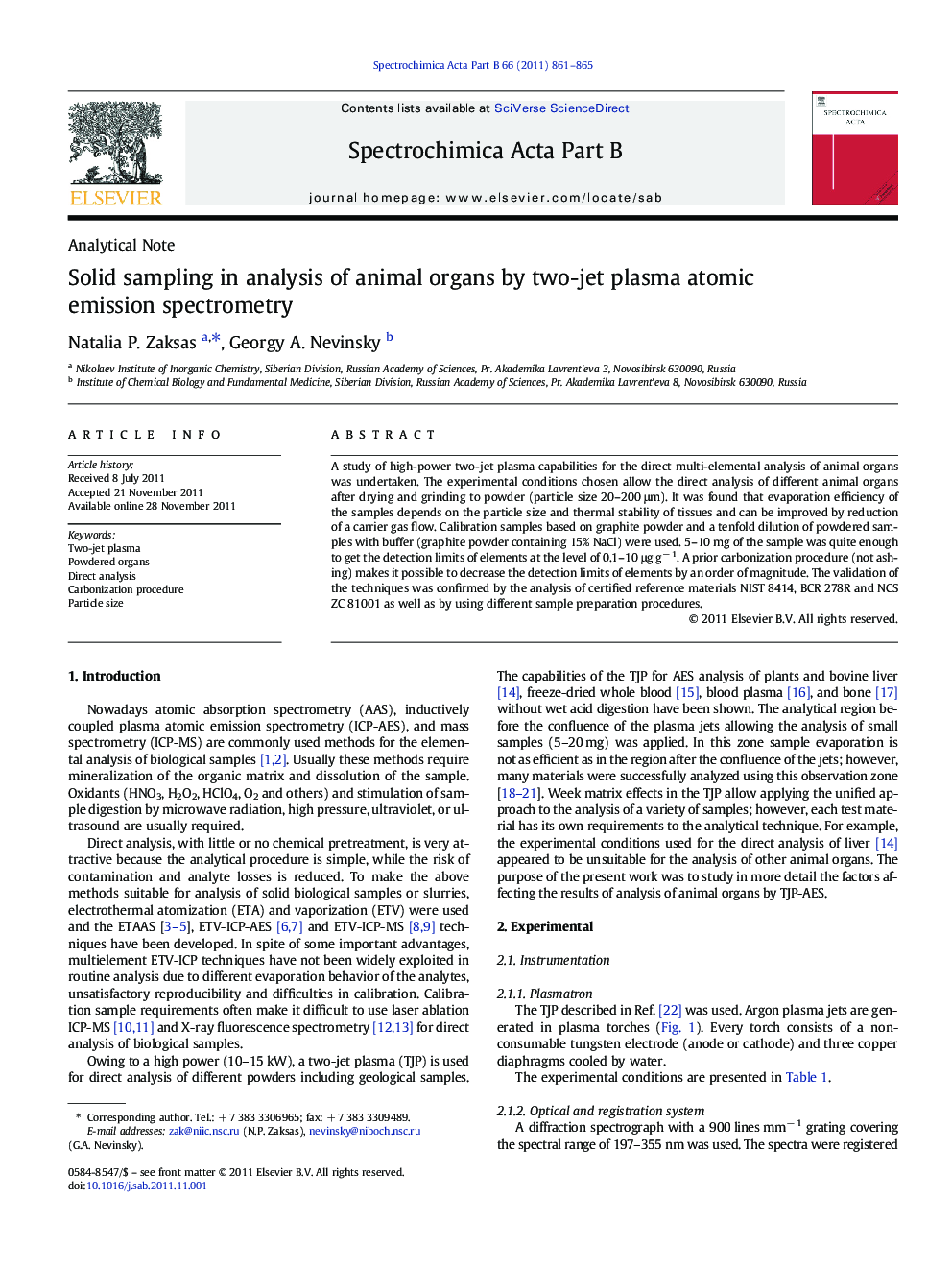| Article ID | Journal | Published Year | Pages | File Type |
|---|---|---|---|---|
| 1240119 | Spectrochimica Acta Part B: Atomic Spectroscopy | 2011 | 5 Pages |
A study of high-power two-jet plasma capabilities for the direct multi-elemental analysis of animal organs was undertaken. The experimental conditions chosen allow the direct analysis of different animal organs after drying and grinding to powder (particle size 20–200 μm). It was found that evaporation efficiency of the samples depends on the particle size and thermal stability of tissues and can be improved by reduction of a carrier gas flow. Calibration samples based on graphite powder and a tenfold dilution of powdered samples with buffer (graphite powder containing 15% NaCl) were used. 5–10 mg of the sample was quite enough to get the detection limits of elements at the level of 0.1–10 μg g− 1. A prior carbonization procedure (not ashing) makes it possible to decrease the detection limits of elements by an order of magnitude. The validation of the techniques was confirmed by the analysis of certified reference materials NIST 8414, BCR 278R and NCS ZC 81001 as well as by using different sample preparation procedures.
► A two-jet plasma was used for direct analysis of powdered animal organs. ► The analysis of powders with particles 20–200 μm in size was possible. ► Calibration samples based on graphite powder were used. ► Carbonization of the sample allows decreasing detection limits of elements.
